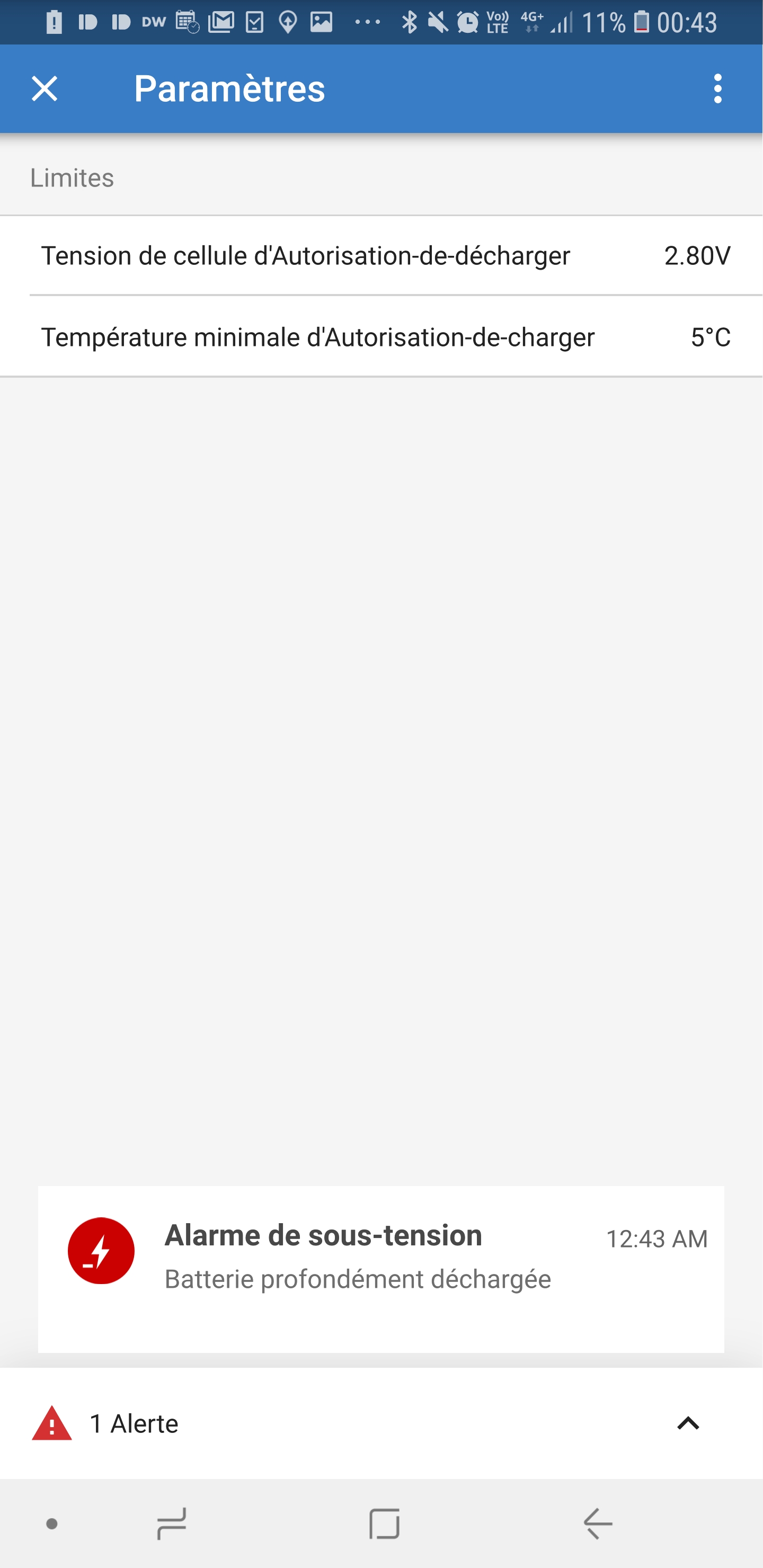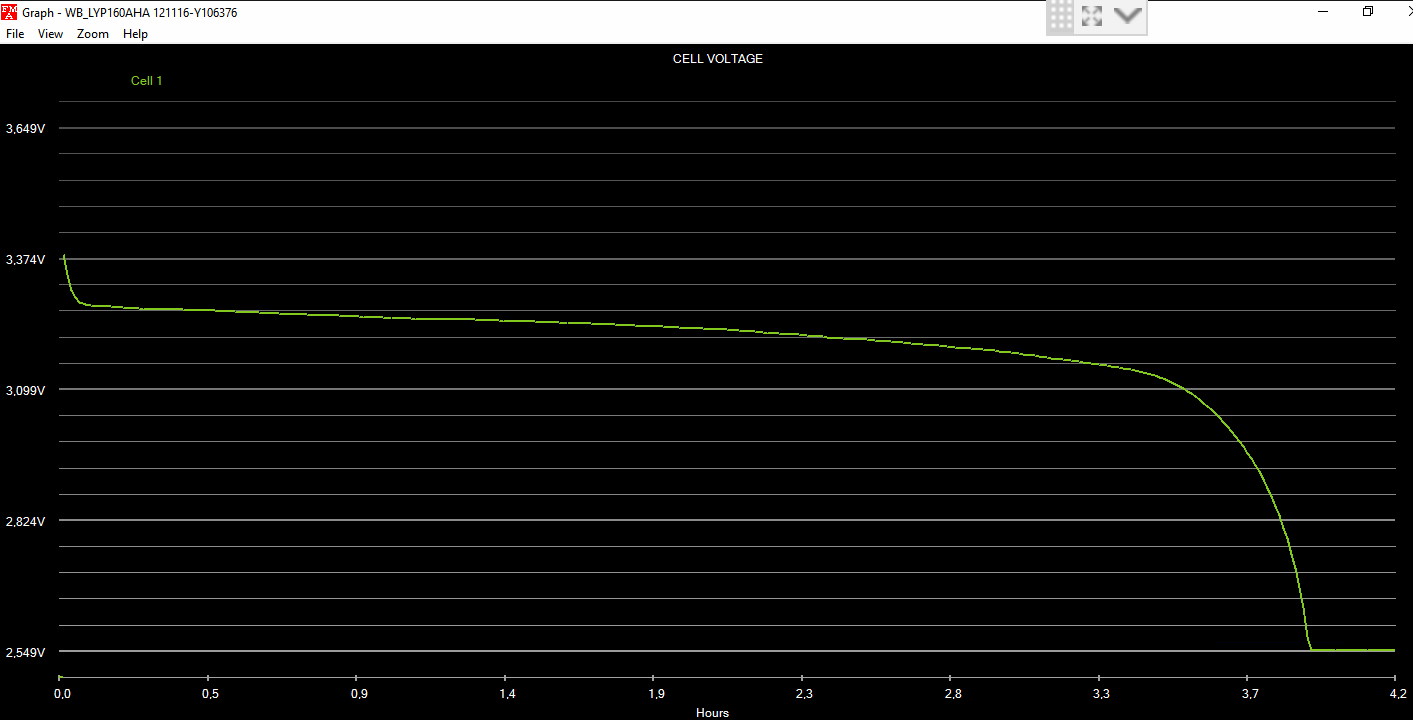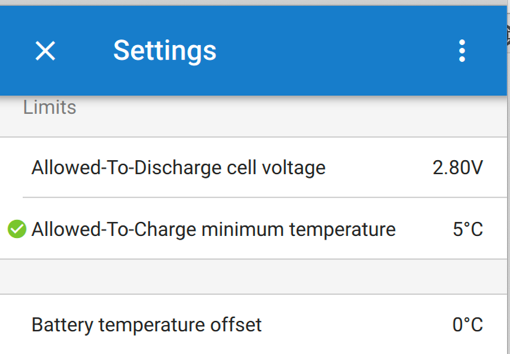Help,
Altrought the voltage of all my cells is higher than 2,8V my SmartLithium 100A doesn't allow me to discharge, says voltage is too low.
I've been to 2.79V, the internal bms then stopped discharging.
Now the voltage is back to 2.96V -> 3.18V after charging a little and I still cant start using the battery... the battery says "discharge deactivated"
I want to start my webasto to heat up my caravan and have some light, but all is turned off !
Please HELP !
See screenshots below, status and parameters.






